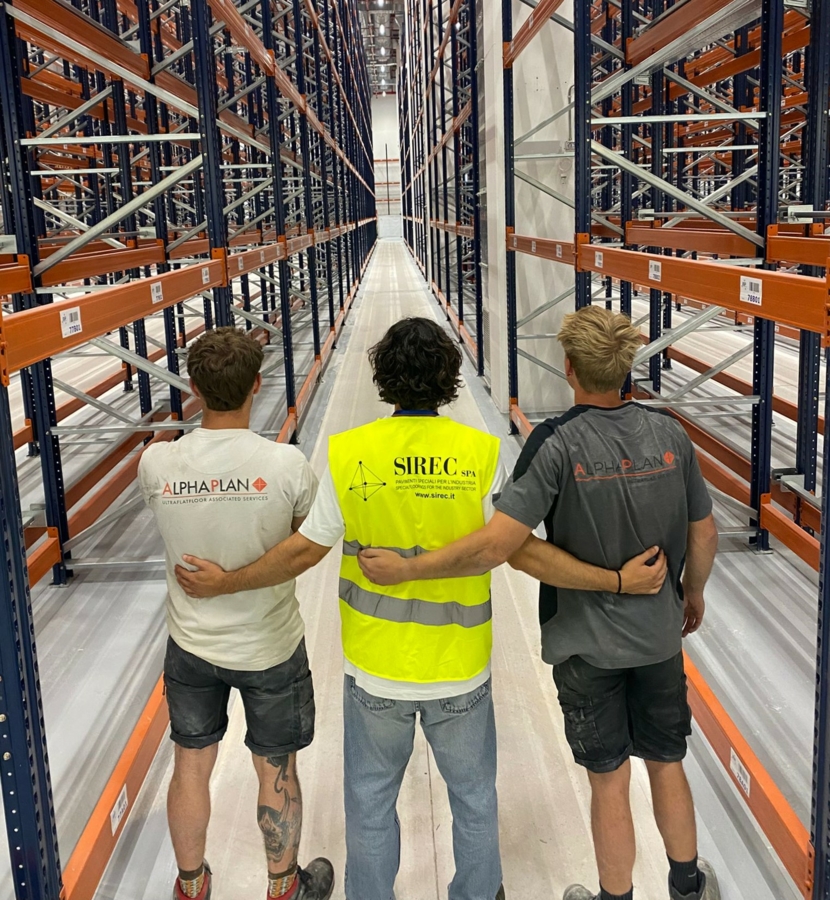The importance of flatness in logistics warehouse flooring
In the industrial logistics sector, the flatness of the floor plays a decisive role. It is not a simple technical detail, but a factor that directly affects the performance of handling systems, the reliability of machinery, and the overall durability of the structure.
What is meant by the flatness of an industrial floor?
Flatness represents the degree of uniformity of a floor surface in relation to an ideal plane.
In practical terms, it indicates how free the surface is from waves, unevenness, or irregularities. In a warehouse, where forklifts and automated systems move along defined paths, even minimal differences can cause vibrations, load instability, and premature wear of vehicles.
A flat floor therefore ensures stable movement, safe maneuvers, and greater operational efficiency.
Why is flatness so important in logistics?
In high-density warehouses, especially those with narrow aisles or automated storage systems, floor precision is essential.
An irregularity of just a few millimeters can compromise forklift stability and slow down workflow. Vibrations, micro-impacts, and load oscillations lead to higher maintenance costs and reduced productivity.
Ensuring flatness means achieving consistent performance, operator safety, and long-term reliability.
Which standards define flatness requirements?
Flatness is governed by specific international technical standards that establish measurable limits and tolerances. The most widely used in the industry include:
- VDMA guidelines
- DIN 18202 and DIN 15185 standards
- TR34
- EN 15620
These references make it possible to precisely define the flooring requirements according to the type of handling expected and the characteristics of the facility.
Complying with these standards ensures technical conformity and functional safety throughout every stage of use.
How is flatness verified using the Sirec method?
To achieve precise and objective results, Sirec uses the digital FloorProfiler system, a self-propelled robot that performs automatic, high-accuracy measurements. The device travels along the warehouse aisles at a constant speed, following a straight trajectory and recording the floor’s height variations. The collected data is digitally processed and compared with reference values established by the standards.
In the event of deviations, Sirec can carry out targeted corrective actions, such as grinding or localized leveling, to bring the floor back within the required tolerances.
The result is a complete, fast, and certified inspection, supported by technical documentation that certifies the compliance of the executed work.
How can flatness be ensured from the design phase?
Achieving optimal flatness starts already in the design phase.
It is essential to carefully prepare the sub-base, select suitable materials, and correctly define tolerances according to the type of handling.
During construction, Sirec performs progressive checks to detect potential defects before completion, thus avoiding more complex and costly later interventions.
This integrated approach ensures that the final floor precisely meets the required specifications, delivering high and long-lasting performance.
Thanks to its experience and the use of advanced technological tools such as the FloorProfiler, Sirec can guarantee perfectly flat, certified industrial floors compliant with international standards.
The combination of technical expertise, strict quality control, and construction excellence ensures reliable, safe, and high-performing industrial floors capable of meeting the most demanding needs of the modern logistics sector.
Rely on Sirec for the verification or construction of your industrial floor: request a dedicated technical consultation and discover how to ensure maximum flatness and long-term performance!

